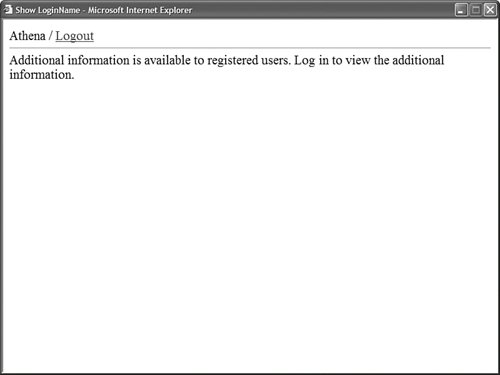Using the LoginName Control
Using the LoginName ControlThe LoginName control displays the current user's registered username. If the current user is not authenticated, the LoginName control renders nothing. The page in Listing 20.28 contains both a LoginName and LoginStatus control. Listing 20.28. ShowLoginName.aspx
When you first open the page in Listing 20.28, the LoginName control displays nothing. However, if you login by clicking the Login link, then the LoginName control displays your username (see Figure 20.12). Figure 20.12. Displaying the current username with the LoginName control. The LoginName control supports the following property:
|